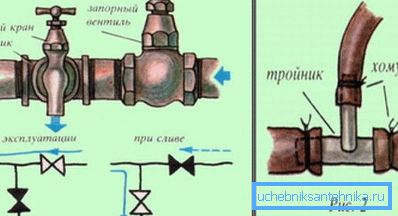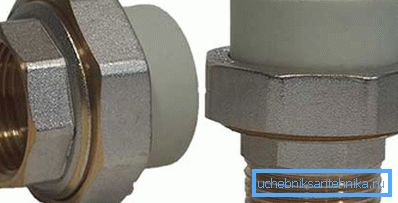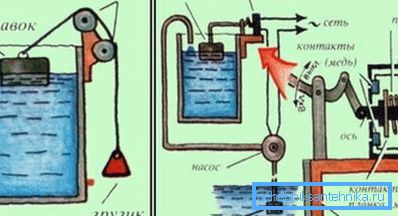We do garden water supply in several stages
Watering the plants is still quite troublesome, especially if you have other concerns, therefore, a garden water pipe made of plastic pipes with your own hands will serve as a good help at the dacha. At the same time, it is not at all necessary to have a centralized water supply - it is enough to have a large capacity that needs to be filled with water.
However, we will tell the details of this below, and also show you the video in this article.

Watering plants
Note. In any case, if you want to equip watering a garden or vegetable garden, you will need pipes. But metal, which is familiar to everyone, is not appropriate here, as a rule, polyethylene or polypropylene are most often used for such structures.
General terms

- Let's start with the fact that the irrigation system implies the constant presence of water in the pipes, which means that it will remain there during the cold season, which can lead to pipe rupture. Therefore, the arrangement of this type is necessarily done with a slope, that is, in different parts there should be drain valves, which will be located in the lower points.
- In any case, you will not be able to make the total slope of the pipe, therefore, you can distribute such points into sections (along the beds) - each span will have an inclination with a valve at the lower point, with which you can always drain all the water without residue. If water remains in the pipes, it can lead to their rupture during freezing.
- The system should consist of one shut-off valve and a certain number of drain valves at the lowest points of the pipeline.. Of course, the instruction allows you to manage with one valve to drain the water, but this is very inconvenient, and the residue will not be completely removed if you do not equip each lower point with a drain.
Soft installation

The most convenient is the option to install polyethylene pipes for garden plumbing, that is, such hoses are connected from a water distribution hub, starting from a house, basement or street. This means that a shut-off valve will be embedded on this node, after which there is a tee that allows you to break the highway into sections.
Depending on the area of your site, there may be many such tees for pipes - each of them allows you to power two branches, therefore, one can proceed from the calculation - one tee for two beds. Of course, it will be much more convenient if you shut the valves in front of each tee - this will reduce the water consumption when dismantling the system for the winter period.
It should be noted that one more convenience of welded polyethylene is the simplicity of its dismantling, that is, you can simply remove the hose from the tee (with the valve closed) and, lifting one end, drain all the remaining water. After that, the polyethylene pipe is twisted into a coil and sent to storage, in one of the outbuildings.
Polypropylene

It is somewhat more difficult to make the wiring with polypropylene pipes - they do not bend, and all turns are carried out only with the help of fittings (tees, angles). Here you will need a soldering iron, with which you can carry out the layout, but at the same time, such pipes are quite practical - you can step on them with your feet and even move the car without the risk of breaking the polypropylene wall - they are quite dense.

If the dismantling of polyethylene hoses is to remove them from the fitting, then the polypropylene is welded and it can only be cut. Therefore, if you expect the pipes to be removed for the winter, you need to provide the joints with special fittings called American. In fact, thanks to such a device, you can make an entire irrigation system collapsible, starting from the output in the house - every section can be provided with this threaded connection of pipes.
Autonomy

If you do not have running water, that is, there is no constant supply of soda from the main or a well, then you can use any kind of tank, such as a barrel or a fuel tank, from large equipment (more than 100 liters). The water intake here can be the most primitive, that is, you fill the vessel with water with the help of buckets that you carry by hand. It can also be a hand pump or a pump (surface or submersible).
The water tank itself is equipped according to the principle of a toilet cistern - with a float and a shut-off valve. The float is best made of foam - it does not soak and does not absorb moisture, although, by and large, even a wooden chock is suitable here, but it will eventually become unsuitable.
That is, a lever is attached to the float, which is connected to the shut-off valve, but the shut-off valve is a ball valve or a cartridge valve that will regulate the flow of water into the container (the price of the ball mechanism is usually higher).
The height at which the water tank is located also matters, for example, if the bottom of the barrel is located at a level of three meters from the irrigation line, then a pressure of about 0.3 atmospheres will be created in the pipe. It turns out that the higher the barrel (tank) with water, the better the pressure will be, although this is not a prerequisite for irrigation - most often even 0.1 of the atmosphere is sufficient.
It should be noted that the water for irrigation should not be cold, for example, if you take it from an artesian well, then you need to defend the liquid in the sun to warm it up to at least 18 ° C. The volume of the barrel must be at least 200-250 liters, so that all the water that will be used at one time has the same temperature.
Note. For installation of the irrigation system, polypropylene PN-10 or PN-16 is used, as well as soldered low-pressure polyethylene (HDPE).
Conclusion
In fact, garden water supply with your own hands is not just pipes with faucets and fittings, but a hose in the form of a sieve. That is, you make many small holes in the pipe with the help of the same shoe awl, and water will constantly trickle through them. Having such a device, you don’t even have to equip the bottom points with drain valves.